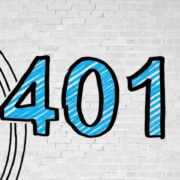You have heard a lot about 401k and the employer match. So much so that it has become synonymous with retirement. What are they? And how does the employer match work? These are the questions we will be diving into here.
401k is a retirement scheme sponsored by the company that employs you. It allows millions of employees like you to set aside a portion of their pre-tax salary for retirement. In that case, if your employer provides a 401k match your contribution up to a certain amount.
Not taking the maximum benefit of the employer match is akin to leaving free money on the table without realizing that it could grow to a massive amount by the time of your retirement. The 401k match boosts your total compensation.
Since you defer to your 401k before taxes, you are minimizing your tax bill. Your earnings in the 401k aren’t taxed until you start withdrawing money years or decades later during retirement. You can choose to invest the funds in a wide variety of vehicles such as stocks and bonds, depending on your risk tolerance.
At the time of joining a company, talk to HR and ask about the employer match. Only after that should you choose what percentage of the paycheck to contribute towards your 401k plan.
How does it work?
Each employer has a different matching policy. So you’d want to check with yours. There are three standard matching options that most employers use.
Let’s get to know them:
-
A fixed match
The company could contribute the same amount as you up to a predefined ceiling. For instance, if the ceiling is 5% and your annual salary is $60,000, you will be contributing $3,000 towards your 401k. And your employer will add $3,000 from their side.
-
A partial match
Some companies offer to match a percentage of the paycheck you defer to your 401k. Let’s say your employer matches 50% of your contribution up to 5% of your salary. If your salary is $60,000/year and you are deferring 5% to your plan, your portion will be $3,000. But your employer will match only 50% of it. That’s $1,500. If you defer more than 5% to your 401k, it will go unmatched.
-
A blanket match
Your employer may use a blanket match strategy, contributing a fixed percentage of salary to the 401k plans of all employees irrespective of whether they defer anything to their 401k or not.
The Employee Retirement Income Security Act determines the broad contribution and withdrawal rules. But employers get to decide on the specific terms for their employees’ 401k plans. Make sure you are maximizing the benefit of the match.
Vesting schedule could be the hidden devil
Whatever amount you defer to your 401k plan is yours. Of course, you’ll have to pay taxes at the time of withdrawal and a staggering 10% penalty if you withdraw early. But that’s a different subject. The money is still yours to keep, and you can roll it over to your new employer’s 401k plan when you change jobs.
But your employer’s match will be subject to a vesting plan that you might not be away from. It’s a strategy companies use to keep you working for them for a long time. They would lose a little less money in case you switch jobs early.
The vesting schedule tells you what percentage of the employer’s match you own at any given point in time. It depends on how long you have worked at the company. There are three different vesting schedules most companies use.
Let’s look into them:
-
Graded vesting
You’ll own the employer’s match gradually over a specific period. For instance, if your employer’s match vests over five years, you will own 20% of it after the first year, 40% after two years, 60% after three years, 80% after four years, and 100% after five years of employment.
-
Cliff vesting
In this case, you will own 0% of the employer’s match for a specific period. Once you cross that milestone, you’ll own 100%. If your employer has a four-year cliff, you won’t hold their match for the first four years. But you’ll own 100% of the match after the fourth year.
-
Immediate vesting
Very few companies offer immediate investing. In this scenario, you own 100% of your employer’s amount contributed towards your 401k plan.
Whether you have been working with your employer for a few weeks or years, it’s essential to check with them about their vesting schedule. If you were thinking of changing jobs just a few months before the employer’s match vests 100%, you’d want to push those plans until the vesting period is over.
How much can I contribute?
The Internal Revenue Service determines the contribution limits to a 401k every year. People can defer to their 401k changes every year to keep up with inflation.
However, for 2021, the IRS has kept it the same as last year. That’s $19,500 per year if you are under the age of 50. If you are above 50, you get to contribute an extra $6,500 a year ($26,000) to catch up with your retirement. Of course, your employer can further reduce these limits.
According to the IRS, an employee and their employer together can defer no more than $58,000 or 100% of the employee’s yearly salary, whichever is lesser.
It means you can defer up to $19,50, or 26,000 depending on the age of ger 401k. And the employer’s match doesn’t count towards your contribution of $19,500. It stands on its own.
The bottom line
One of the best merits of a 401k match is that it gives a significant boost to your retirement fund. If needed, speak to HR to ensure that you are deferring enough to make the most out of the employer match.
And since it’s tax-advantaged, you are paying lower taxes today, so your money can compound uninterrupted for years and decades.
If you withdraw funds before the age of 55 and ½, you’ll have to pay not only taxes but also an early withdrawal penalty of 10%. The penalty deters individuals from dipping into their retirement fund unnecessarily. That’s a good thing.





















Comments